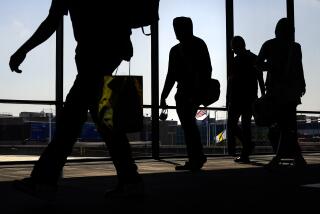Planning an Alaska cruise? Now’s the best time to book, especially to find deals
- Share via
In Juneau, Alaska, on Sunday, the sun will dip below the horizon at 3:06 p.m. And because the sun rose about 9 a.m., that means a little more than six hours of daylight. This also is one of the stormiest times of the year in Southeast Alaska. Probably not a great time to go touring.
But it is a great time to start planning a ship trip to Alaska. Cruising is booming; visitor numbers are expected to set records for the fifth straight year. Nearly 1.44 million passengers are planning to visit in 2020, a 6% increase, according to Cruise Lines International Assn. Alaska.
In 2020, 10 new ships and 29 more ports of call are expected; Juneau, Ketchikan and Skagway are expected to be the top destinations. Almost every cruise line, including luxury and expedition-style ships, will sail to the 49th state, most from Seattle or Vancouver, Canada.
If you hate to fly, you can avoid it by sailing round trip from Los Angeles on 14-day May or June trips with Princess Cruises. Inside cabins start at $1,419 per person, double occupancy.
Why visit in 2020? Here are five reasons to add an Alaskan cruise to your shopping list.
Deals
Cruise lines are beginning to announce their specials for what they call “wave season,” which typically begins in December or January and runs until mid-March.
Think of it as a wave of bookings, sort of a three-month-long Black Friday for cruise lines. That’s when cruise lines and travel agents try to book as many cabins as possible so they entice passengers to book early by offering discounted fares, free drinks and dining packages, free WiFi and onboard credit.
You won’t find rock-bottom prices, but you will find upgrades to nicer cabins and onboard credit for things such as spa treatments, excursions and merchandise in the onboard shops. You can often find inside cabins for as little as $100 a day per person.
Evaluate the offers before you buy. Don’t worry if you can’t decide; you can usually book later. Cruise lines usually have last-minute sales throughout the year.
Shoulder-season bargains
For the most part, cruise lines sail Alaskan waters May through September (Alaskan Dream Cruises has added sailings as early as March), but most people book for July and August.
The upside: Kids are out of school and the salmon are running, making it easier to spot bears fishing. But there are major downsides: It’s crowded. Multiple cruise lines sometimes arrive in ports the same day, and prices are at their highest.
May and September cruises are bargains; you may save $200 or more per person on the cruise alone because the weather may be imperfect. You’ll find other bargains on airfare and hotel rooms if you steer away from summer.
Statistically, May has fewer rainy days than any other month. In September, you can see fall color. Another advantage: You may find a wider availability of ships and cabins during these shoulder seasons. A disadvantage: The warmest weather is in the summer; temperatures may top out only in the 50s in May and September, but summer months often hit 70s and sometimes 80s.
Choice of scenery
Whether your cruise follows an Inside Passage itinerary or a Gulf of Alaska route, you’ll have multiple opportunities to see jaw-dropping scenery that includes fiords, lakes, mountains and some of the nation’s wildest national parks. You can book shore excursions that will take you hiking, kayaking, snowmobiling or “flightseeing,” often considered a highlight of an Alaska trip.
Most cruise lines schedule visits to villages where passengers can learn about local customs. Or you can walk off the ship at a port stop and wander around on your own.
Multigenerational perks
Alaska is a destination unlike any other, still wild and teeming with endless adventure. There aren’t many places you can see moose, grizzly bears, caribou and glaciers. Your kids and grandchildren will love it, and you’ll make memories.
Don’t put it off. It’s disappearing: The effects of global warming in Alaska include melting permafrost, receding glaciers, eroding coasts, disappearing sea ice and mounting problems for native species, such as caribou, sea otters, salmon and polar bears. The dramatic temperature changes in Alaska are causing the landscape to change faster than anywhere else in the United States, a government report issued last summer said. Go now, before it’s gone.
More to Read
Sign up for The Wild
We’ll help you find the best places to hike, bike and run, as well as the perfect silent spots for meditation and yoga.
You may occasionally receive promotional content from the Los Angeles Times.






